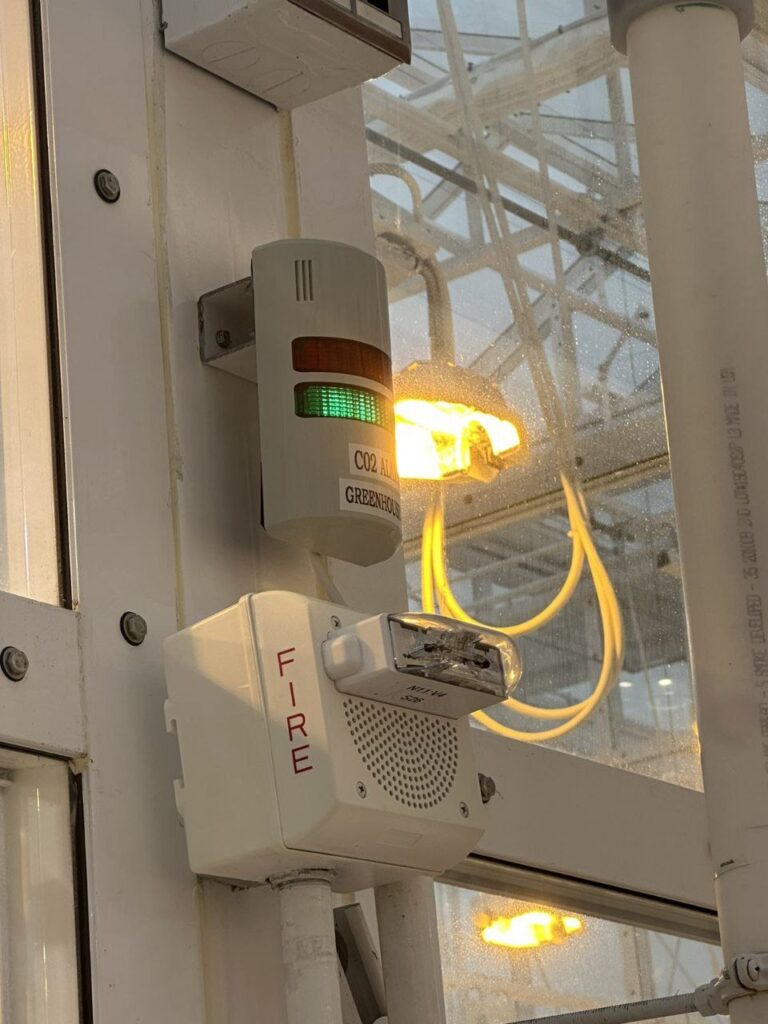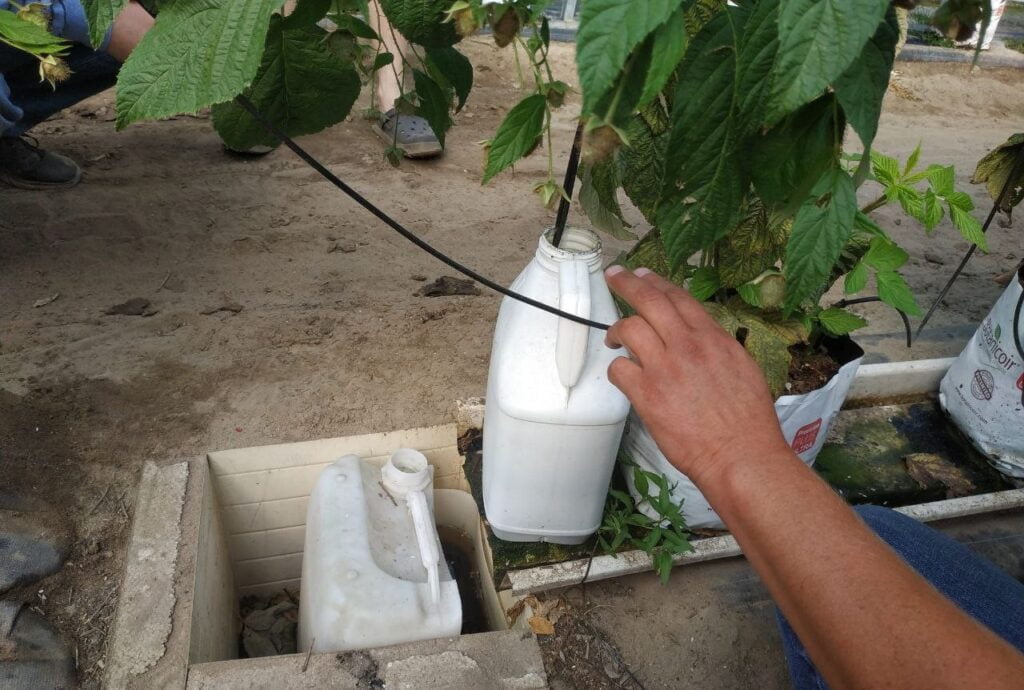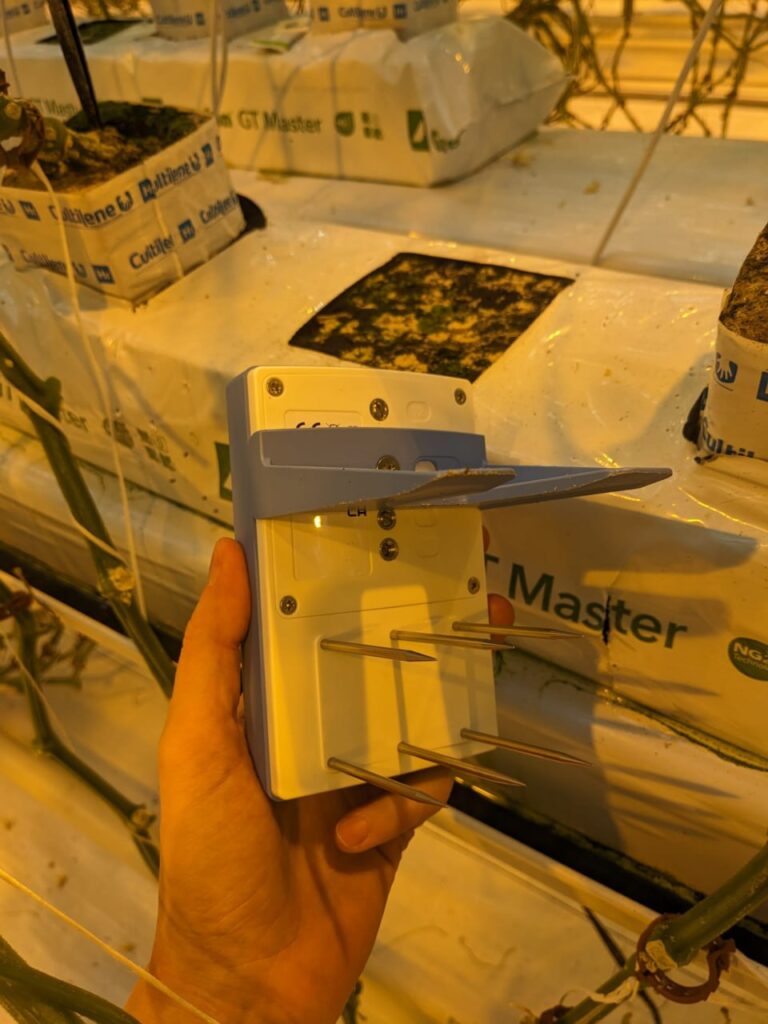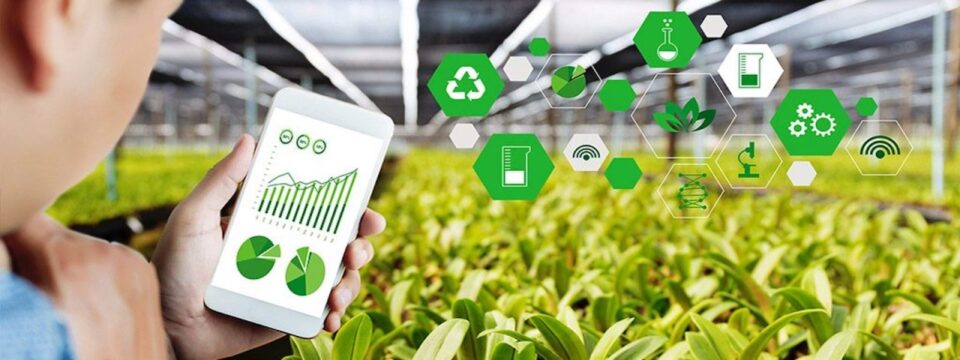It is very difficult to draw a clear line between high-techn greenhouse and no so high-tech. Essentially, the higher the technological level of the greenhouse, the more opportunities the grower has to meet the needs of the plants. However, in many seemingly low-tech greenhouses, it is quite possible to use high-tech elements, which, with relatively small investments, can significantly increase the yield and quality of the produce grown. Inpensive and wodely available sensors that measure various parameters in the greenhouse could be of great help in this regard. As the Dutch saying goes, “to measure is to know.”
Basic indicators – temperature and relative humidity, CO2 concentration
Until now, the owners of many relatively small greenhouses with an area from several thousand square meters to several hectares do not pay due attention to measuring air temperature and relative humidity. This is mainly due to the fact that they do not see the opportunity to somehow influence these indicators in hot weather. But it a wrong approach!
Knowing the real state of affairs, it is much easier for the grower to make a decision on the purchase and use of shading screens or special coatings which reduce air overheating. Presently there are lots of relatively inexpensive sensors that measure air temperature and humidity, as well as CO2 concentration on the market. It is especially convenient that the sensors transmit information to the user’s computer or hand-held device and a special program displays it in a graphical form. Taking this information into account, the grower can much more accurately develop a strategy for watering plants and ventilating the greenhouse.
It would seem, why know the current concentration of CO2 in the air of the greenhouse if the grower does not use CO2 enriching equipment? Well, in a completely closed greenhouse, plants consume all available CO2 completely within 1.5-2 hours after sunrise. The period during which plants consume all available CO2 depends on the volume of air in the greenhouse – the more air, the higher the depot of CO2. Such situations occur in the winter-spring period, when it is sunny but cold outside, so the ventilation windows are not opened so as not to lose heat. However, if there is not enough CO2 in the air, then photosynthesis does not occur, which means heating, water, and fertilizers are wasted.
By opening the ventilation windows in time, you can increase the CO2 concentration to at least the natural level of 400 ppm. In order not to waste heat and at the same time ensure the progress of photosynthesis, a CO2 sensor is needed. It is better if there are several sensors in the greenhouse. In this case the grower gets a more objective picture. The fact is that even in high-tech large greenhouses there are areas in which the microclimate parameters differ in one direction or another.
 PAR (Photosynthetically Active Radiation) meters
PAR (Photosynthetically Active Radiation) meters
Modern high-tech greenhouses include weather stations, which are traditionally located outside the greenhouse. They measure the temperature and relative humidity of the air, the direction and speed of the wind, as well as the solar radiation, more precisely, photosynthetically active radiation (PAR). These parameters are sent to the computer that controls the microclimate of the greenhouse. Many investors mistakenly believe that such a computer “knows everything” itself and will provide the plants with everything they need. In fact, the necessary parameters are set by the grower, and the computer only controls the corresponding pumps and mechanisms, taking into account the readings of the weather station and sensors in the greenhouse.
For small farms, such weather stations may not be so necessary, but a solar radiation sensor is very useful. With the development of cultivation with additional lighting, it was found that to produce one kilogram of long-fruited cucumber, it is necessary to accumulate 3000 J/cm2 of light. For medium-fruited hybrids, 3300-3500 J/cm2 is required, for short-fruited hybrids – 4500-5000 J/cm2. At the same time, plants are able to use a maximum of 1700 J/cm2 per day. That is, excessive sunlight will not increase productivity, but will cause stress in plants. If there is a lack of light, no amount of fertilizer will increase or speed up the harvest formation. When measuring lighting, different units of measurement are used; the climate computer itself converts them into each other. At a light intensity of 100 W/m2, plants receive 36 J/cm2*sec. These data are used when calculating the lighting system, but they are also important for calculating the irrigation strategy, not only in hydroponics, but also when growing in a soil.
For more than thirty years, irrigation in hydroponics has been calculated on the basis that tomato plants require 3 ml of water/m2 per J/m2. Of this, 2 ml/m2 goes to the needs of the plants themselves, and 1 ml/m2 goes into drainage to prevent salinization of the substrate. In recent years in the Netherlands, and increasingly in other countries, drainage solution is collected, disinfected and reused to prevent environmental pollution and waste of fertilizers. Weather stations collect data on the arrival of light, climate computer programs convert this information into graphs, on the basis of which the agronomist builds an irrigation strategy and makes decisions about its correction during periods of changeable weather.
 However, light-based irrigation is possible only where such information is available to the grower. If it is not there, the grower can only rely on your own experience, if any, or contradictory recommendations from experts from various chats. As a result, yields are always lower than they would have been using a PAR sensor. They are now available both as part of agrometeorological stations and separately.
However, light-based irrigation is possible only where such information is available to the grower. If it is not there, the grower can only rely on your own experience, if any, or contradictory recommendations from experts from various chats. As a result, yields are always lower than they would have been using a PAR sensor. They are now available both as part of agrometeorological stations and separately.
Irrigation by weight
In modern greenhouses, most vegetables are grown in a limited amount of substrate. This can be stone wool or coconut fiber, less often wood fiber and peat, sometimes perlite. All substrates (even different brands from the same manufacturer) differ in structure and properties:
● duration of use – for roses it is several years, for vegetables – one year is optimal. In some cases, it is used for two years, although the results are lower during the second year;
● water holding capacity;
● water/air ratio, due to which some amount of air is always present in them.
Because of these differences, each material and even brand of substrate requires its own irrigation regime, which in turn depends on the crop being grown, the size of the plants and leaf surface area, lighting, air temperature, and on the combination of these factors at one time or another. How are they watered?! The irrigation strategy is based on two indicators – the change in the mass of the substrate and the amount of light (natural and artificial, if lamps are used).
Currently, many small greenhouse farms also use hydroponic cultivation, most often using coconut substrate. Often they use a substrate of the second year of use, which is sold by large farms. The higher the yield in a greenhouse, the more expensive each percent of crop loss from pests and diseases is, so high-tech farms try to use substrates for only one year to avoid the accumulation of infections. Small farms willingly purchase such substrates despite the phytosanitary risks, but their owners also face the question of how to properly water the plants.
In all modern greenhouses (CEA), a certain number of substrate blocks (at least one) with all the plants in them are placed on scales. Based on the dynamics of mass changes, the grower determines the start and end times of irrigation. Not so long ago, the grower needed to remember to go to the scales in time and write down their readings; now there are scales that transmit information to the climate computer. In the optimal case, systems such as Pascal, Trutina, or automatic scales from Aranet are used, which allow you to weigh several blocks of substrate at the same time, which provides more reliable information. Taking into account the removal of leaves, harvesting, taking into account plant parameters and watering already carried out, it is possible to optimize not only irrigation, but also all work with plants (removing of leaves, clipping, harvesting etc) and, as a result, increase the yield.
A number of companies, for example Priva, have already developed irrigation control programs based on scale readings, including for strawberries.
Grosens and other substrate moisture sensors
Grosens is a substrate moisture sensor developed by Grodan and designed to work with stone wool substrates. It allows you to obtain real-time data on water content, salt concentration (EC) and temperature of the stone wool substrate 24/7. The system can be connected to most climate control computers to instantly and continuously display data in a form of graphs.
 In addition, it also allows you to display more detailed information on any external computer or device connected to the Internet/Ethernet. The wireless sensor is plugged into the substrate block and constantly transmits information to the receiver; the data is processed and then transmitted to the climate control computer and is available for viewing on any external computer connected to the Internet.
In addition, it also allows you to display more detailed information on any external computer or device connected to the Internet/Ethernet. The wireless sensor is plugged into the substrate block and constantly transmits information to the receiver; the data is processed and then transmitted to the climate control computer and is available for viewing on any external computer connected to the Internet.
 Growficient sensors work in a similar way, but they can be used not only for stone wool, but also for other substrates.
Growficient sensors work in a similar way, but they can be used not only for stone wool, but also for other substrates.
Thanks to such sensors, growers can receive information in real time, instead of walking around the greenhouse with a hand-held instrument, measuring these indicators in different places, as was done before, and is still done in many farms. It is very important for the grower to make timely adjustments to the irrigation regime specified by the computer. While he/she walks around the greenhouse or several greenhouses with a hand-held device, he/she will have time to go through several waterings, so the information collected will be useless.
Is such a device really needed in a greenhouse? After all, it is not cheap, and from the investor’s point of view, we have somehow managed without it until now. In year-round greenhouses using artificial lighting in winter, it is very important to coordinate the watering regime with the actual PAR, leaf surface area, air temperature and crop load of the plant. Tthe number of fruits set on the plant is the future harvest. In practice, there are often cases when plants are either overdried and some of the ovaries dry out, or overwatered and the roots die from the lack of oxygen. In both cases, the end result is a shortage of crops during the period of the highest prices for products and the highest costs for heating and lighting.
Precision Irrigation Package (PIP) substrate moisture sensors allow you to monitor changes in coconut substrate moisture when growing strawberries and optimize the watering regime for this demanding crop. In England, these sensors have been used for several years and have increased the yield of strawberries by 10% and raspberries by 14% compared to manual irrigation control.
Sensors in a modern, albeit not very high-tech greenhouse, are not a tribute to fashion, but an opportunity to optimize the use of available resources.




